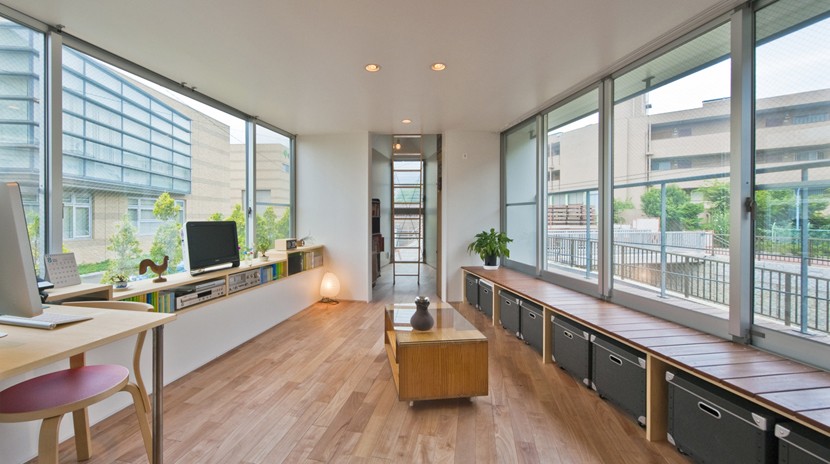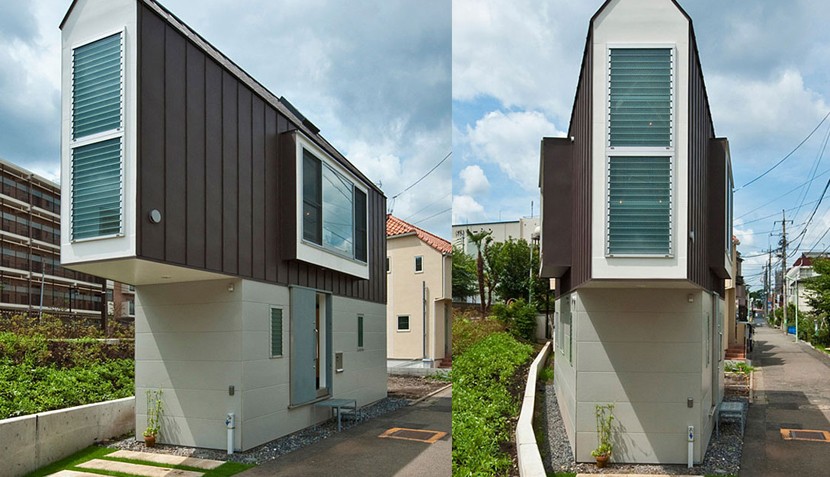Iv'e never been a fan of vast spaces. I wouldn't exactly call myself a hobbit or anything, but Iv'e always favoured a cozy environment over an elaborate, expansive one. It might have something to do with my upbringing. For the first 15 years of my life, I essentially lived in the basement. No this wasn't some kind of disturbing, Boo Radley situation, but one of my own choosing, as the basement in my childhood home was actually quite comfortable. Indeed, in modern parlance one might have described it as a “Man Cave,” before the very concept of the man cave even existed.

That's only part of it though. In actual fact, I believe we were designed to feel safe and secure in our homes, and its very difficult to feel safe and secure when you're front room is the size of a small aircraft hanger. The Japanese know this all too well. They have always praised, vindicated, and even fetishized all things compact, from their infamous capsule hotels, to their perpetually shrinking gadgets and gizmos. The same can be said of their houses, but this is more because of necessity than design. Smaller, quirky homes are more common in Japan because earthquakes are far more common, meaning homes are rarely built with longevity in mind. Building codes are constantly being updated too, which means it can be cheaper for many families to rebuild than to repair.
Located in a town in Niigata called Horinouchi, this 594-square-foot home might not look like much from the outside. But the inside is another story

Most homes in Japan depreciate in value more rapidly than elsewhere in the world, and to make their investments worth it, homeowners will often destroy their house and build a brand new one in oder to turn a profit. This calls for a huge demand for more modern and innovative homes such as this wonderful piece of art (yes I called it art) designed by the brilliant team at Mizuishi Architects Atleiler. Located in a town in Niigata called Horinouchi, this 594-square-foot home might not look like much from the outside, but once you step inside, it's almost looks as if somebody has actually managed to construct a genuine Tardis.

The house was built on a tiny triangular lot that (in this country at least) would usually be seen as little more than a space for a bench. It stretches into three surprisingly spacious floors that have made the most of the available space and seem not only open and comforting, but incredibly light. This is primarily down to the simple, but effective colour scheme and sparse, sensible furnishings. There's also a parking space with shelter and a gorgeous mezzanine that can be used as a spare room, a play room, a room for the kids, or even a nice spot for stargazing thanks to the huge skylights.
The house was built on a tiny triangular lot that (in this country at least) would usually be seen as little more than a space for a bench

Chief Architect Kota Mizuishi, said “Although it was a novel site of a limited area, since a river was faced through a bank and a promenade” he decided to “Design various relations with the river.” He added that “The building is the form that cut an acute angle part on a triangle plan derived from the site. Furthermore, it got the maximum volume of hip roof of three planes in restriction of setback-line.” Of course, there's a fair amount lost in translation in that description (and I'm not even going to pretend to know much of anything regarding architecture), but the pictures certainly fill in the blanks.

Do you think such a design could work over here? In many cities (London especially) space is at a premium, so making the most out of what little available space we have certainly makes sense. But then, in our culture, bigger has always been, and sadly always probably will be, seen as batter. Would you live in a house like this? Let me know in the comments below. I, for one, wouldn't even need a moment to consider it.

Benjamin Hiorns is a freelance writer and struggling musician from Kidderminster in the UK. If a cure little home like this existed here, it would probably be desecrated within the week.






